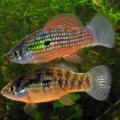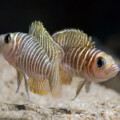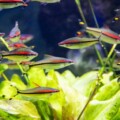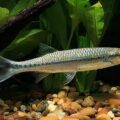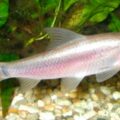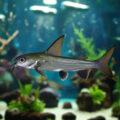The Iridescent Shark Catfish is a gentle giant that can transform your basic, extra-large aquarium into an exotic beauty. Come learn how to care for and keep this species healthy!
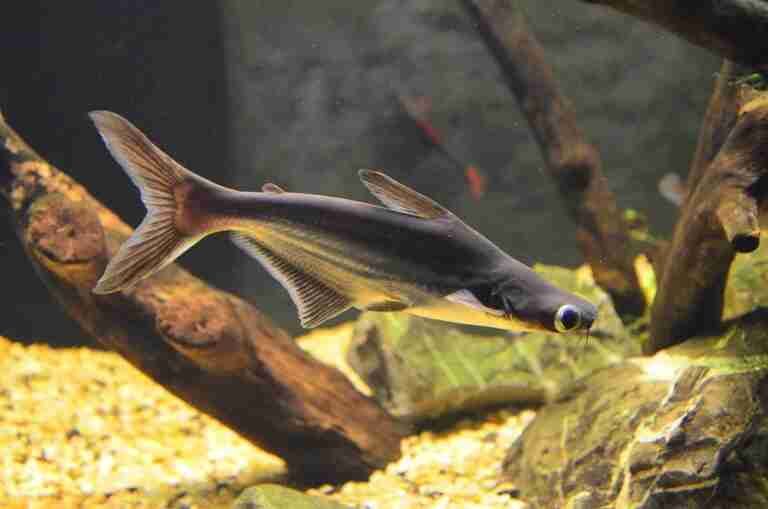
Introduction
Are you an aquarist with an extra large aquarium looking for a show-stopping giant fish that plays well with others? You’ll love Pangasianodon hypophthalmus, Swai, or better known the Iridescent Shark Catfish. It’s a large schooling catfish known for its shimmering body and gentle nature.
This Pangasianodon hypophthalmus overview contains guidance on tank setup, feeding, companions, possible breeding, healthcare, and much more.
Reading this freshwater giant catfish profile explains why this species requires a massive setup and is not a manageable fish for beginners, as traders will have you believe.
Here are Iridescent Shark fish facts you must know before adding this species to your tank.
Author’s Note: Check out our post on the 14 Small & Big Freshwater Pet Sharks for more Freshwater Home Aquarium compatible shark lookalikes.
Origin and Natural Habitat of This Freshwater Titan
Like most giant shark species, the Iridescent Shark is a native Southeast Asian river catfish from the Mekong and Chao Phraya systems. Although it’s called a “Shark,” this giant catfish isn’t a threatening species.
Instead, the Iridescent Shark Catfish is a playful and friendly Mekong native fish species.
When relocating this pet to a personal aquarium, you must create murky, deep, fast-moving river flows imitating the natural habitat of Pangasianodon hypophthalmus. You must also plan for its migratory tendencies by designing massive enclosures with separate territories.
Aquarium Setup for Iridescent Sharks: Think ig, Then Bigger
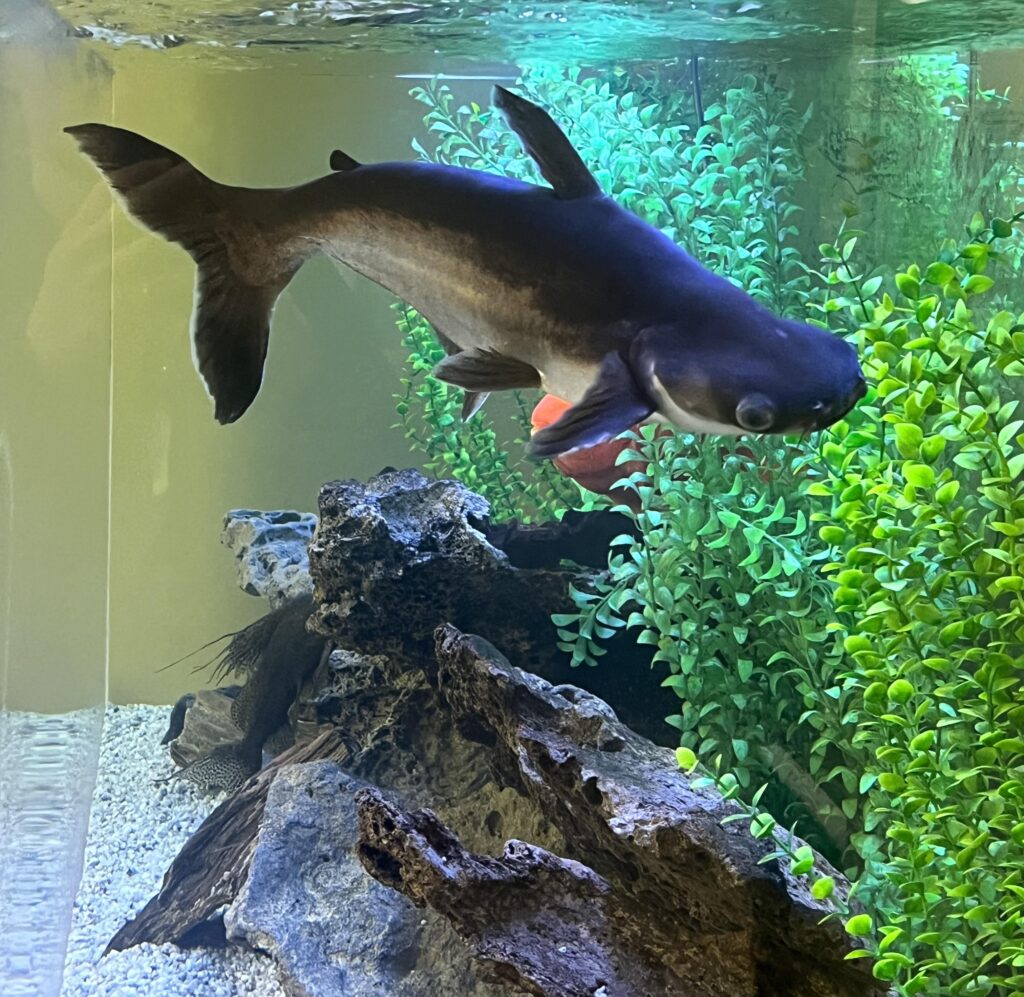
You’re about to see the best setup for freshwater giants, so brace yourself. It’s different from a regular aquarium for large catfish species because it requires advanced equipment and massive enclosures.
So, here it goes.
Tank Size
Iridescent Shark Catfish is such a giant species that even its juveniles need a minimum tank size of 300 gallons! So, I recommend pond-sized enclosures to provide enough swimming space without disturbing your aesthetic and functional choices.
Tank Layout
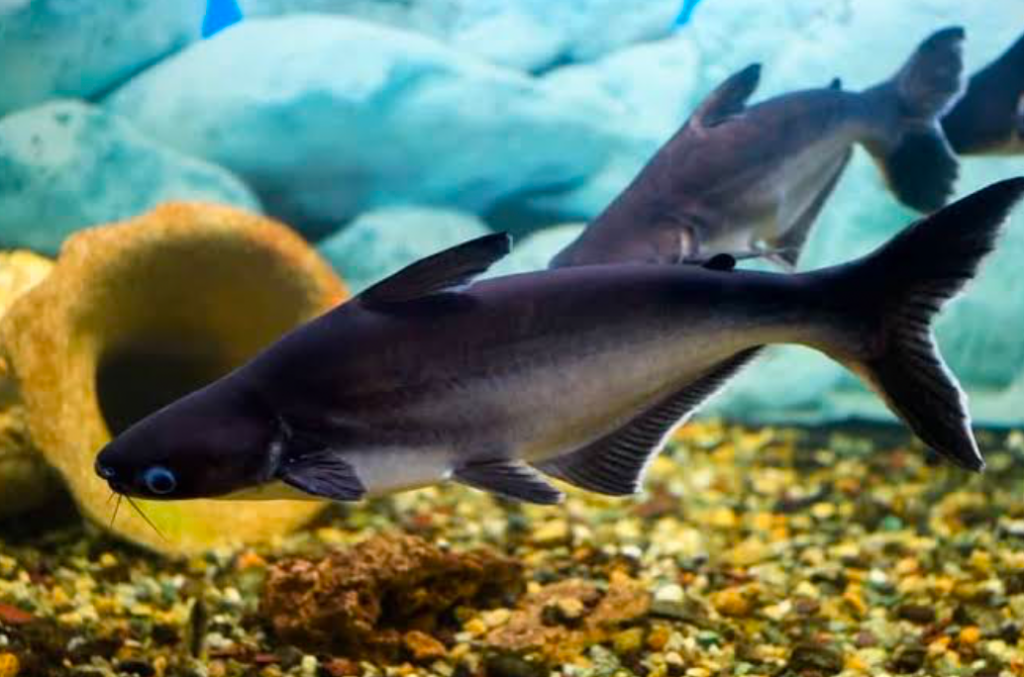
Now, let’s focus on your Iridescent Shark tank requirements, starting with the layout and essential tools.
Because they need open swimming areas, you must prioritize minimal clutter when choosing the tank’s decor.
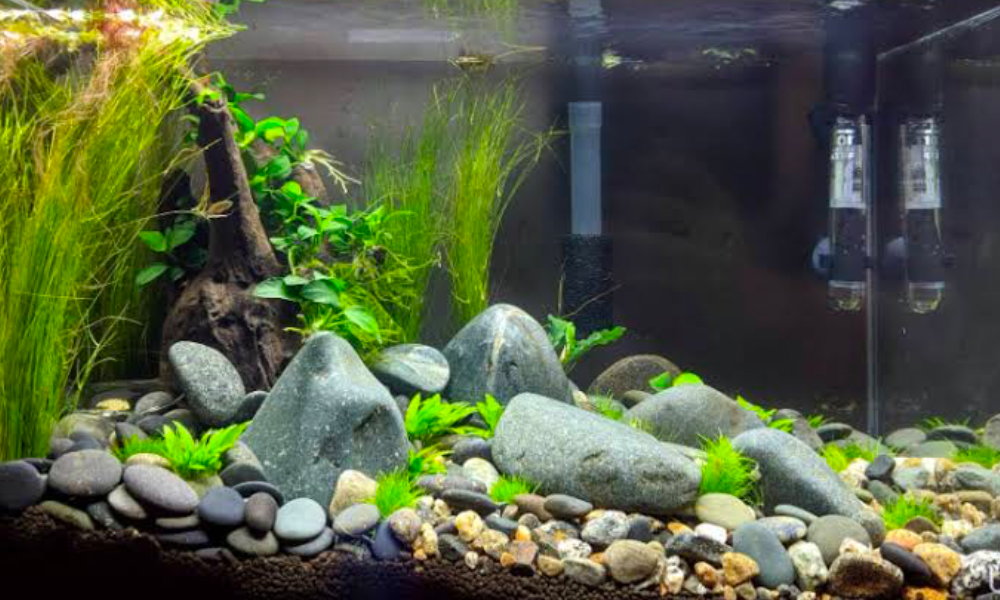
Use smooth rocks to create and accentuate your substrate. It’s safe for your fish’s body and provides hiding spots for other tank mates.
Feel free to add any other aquarium decor you desire, depending on your overall theme. Here are some of my top recommendations:
- Fine sand substrate
- Smooth rocks
- Mixed live plants – Java Fern, Amazon Sword, Christmas Moss
- Driftwood
- Shells
You need a strong external filter to keep the water pristine without worrying about your Iridescent Shark catfish bumping into the system.
Lighting & Flow
Water condition and lighting may be the last aspects of this tank setup, but they aren’t the least. In fact, they’re essential to your pet’s overall well-being.
Use soft lighting that mimics the Southeast Asian rivers and won’t blind your giant catfish. Finally, set the following water parameters:
| Temperature | 72 – 79°F |
| pH | 6.5 – 7.5 |
| Hardness | 2 – 20 dH |
Set the flow to a moderate current to avoid stressing your pets.
After preparing the new aquarium for your Iridescent Shark catfish, you can bring them home. But can you identify this species in the wild?
Recognizing the Iridescent Shark: Features and Growth Rate
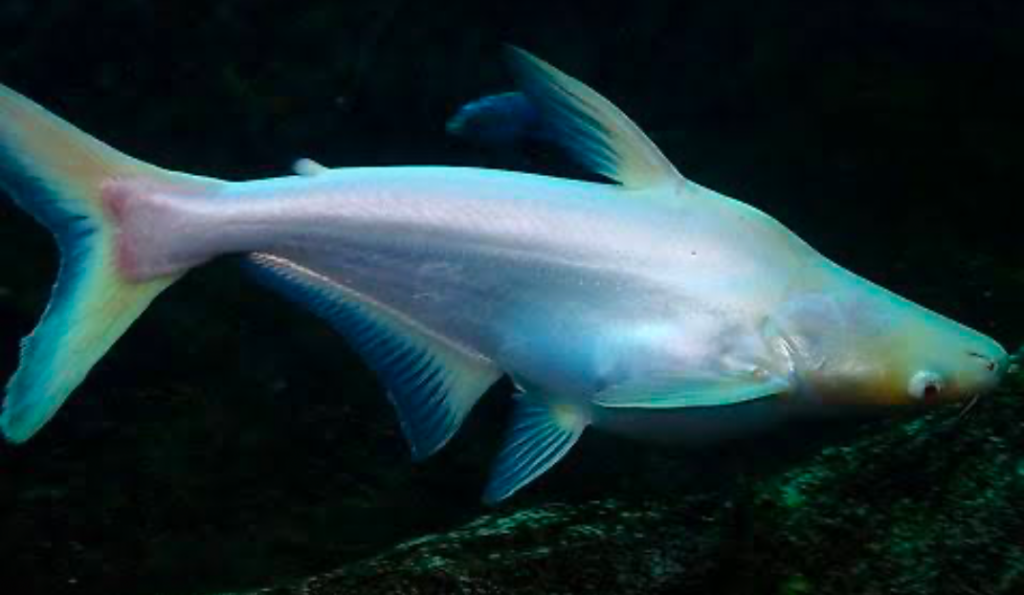
Its hard to miss its torpedo-shaped body, reflective bluish-silver sheen, and long whisker-like barbels. Including its fast growth rate and its adult size, which can exceed 3 feet as a pet, this fish is definitely a centerpiece!
Color patterns and characteristics are important when identifying Pangasianodon hypophthalmus or any other aquatic creature. Take a close look at all of these images.
Color Pattern
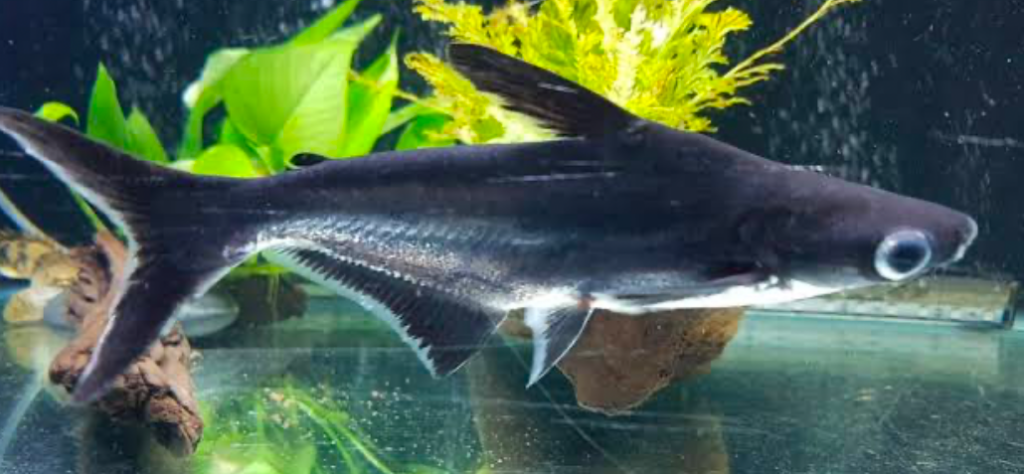
Pangasianodon hypophthalmus is a large reflective aquarium fish with shiny silver-gray scales. It creates iridescent reflections underwater, especially in tanks with LED lighting.
Juveniles have a distinctive black stripe on their lateral-lined scales, while adult Iridiscent Shark catfish are purely gray. No matter their age, they have short fins in dark gray tones that match the rest of their bodies.
Unique Traits
Other unique traits for identifying this shark-like freshwater species include their rapid growth, schooling instincts, and timidity when stressed.
Iridescent Shark Catfish weigh 97 lbs (44 kg) in adulthood and stretch as long as 4.3 ft (130 cm). They play well with other compatible species and love swimming in groups, but become shy under stress.
Due to their large size, they have a large appetite and can, if undernourished, eat weaker, smaller species.
Feeding Needs of an Omnivorous Powerhouse
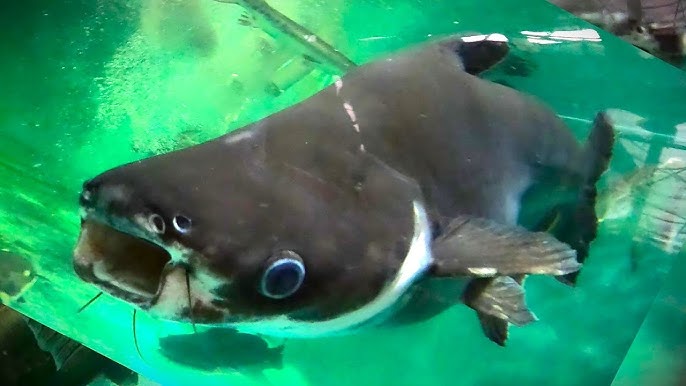
Knowing how large their appetite gets, feeding Iridescent Shark catfish can prove difficult, but with this Pangasianodon diet guide, you’ll succeed easily.
They’re omnivorous feeders who will thrive on a mixed diet of commercial pellets, live food, and greens to ensure the right amount of nourishment.
Feeding Frequency
Regulating food portions for your Iridiscent Shark Catfish reduces the risk of overfeeding or underfeeding, which can stress it. So, feed your pet 2-3 times daily in controlled portions that it’ll consume in less than 3-5 minutes.
Diet Suggestions
Here are a variety of foods that can provide nutrition for large omnivorous fish:
- High-quality commercial catfish sinking pellets
- Tilapia bits,
- peas and
- Earthworms
Ensure these foods sink to the bottom to match your Iridescent Shark Catfish’s bottom-feeding behavior. The only other things that can stop your pet from eating are poor health and competition from other tank mates.
Author’s Note: For more on feeding your aquatic pets check out The Ultimate Guide to Fish Food: Pros and Cons & Best Choices!
Choosing Tank Mates: Size and Speed Matter
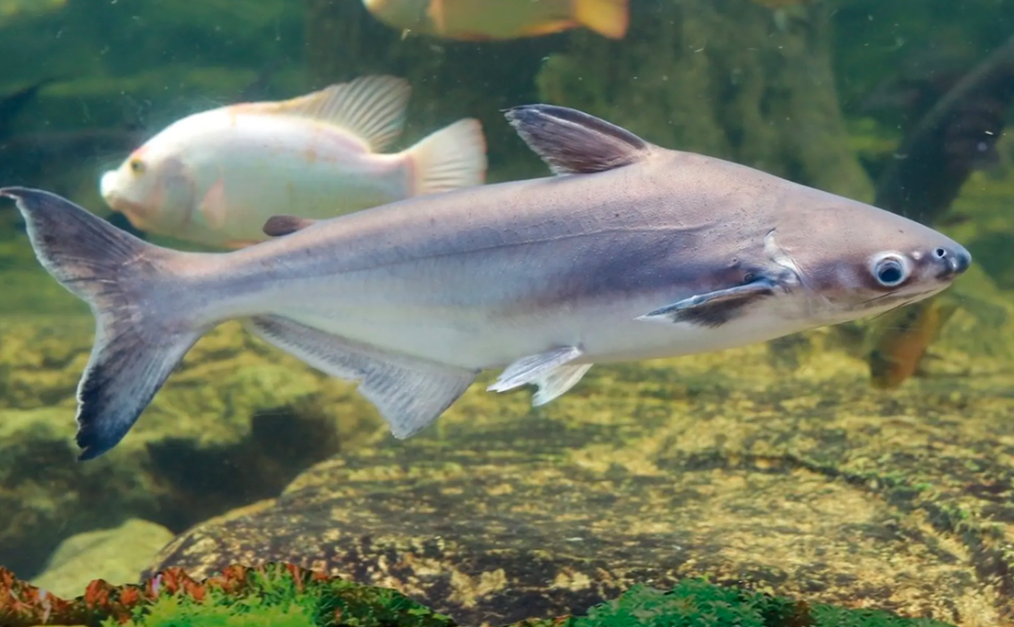
Choosing compatible tank mates for Iridescent Sharks can be tricky because of their intimidating size. However, when you consider their peaceful nature, you’ll understand that large, non-aggressive fish that won’t nip fins or stress the Iridescent Shark are ideal companions.
Compatible Species
Examples of these peaceful fish for extra-large tanks are Pacus, Giant Gouramis, and large Silver Dollars. They’re not as massive as the Iridescent Shark catfish, but they have calm personalities for cohabitation.
Tankmate species to Avoid
Here are some more catfish community aquarium tips to help you avoid incompatible species that cause disharmony and stress.
- Avoid small fish that could be eaten.
- Avoid highly active species that might frighten your Iridiscent Shark catfish.
Examples of incompatible fish for this species include Barbs, aggressive Cichlids, and small community fish.
Breeding Potential and Captive Challenges
I’m about to break your heart if you’re thinking of breeding this species in a home aquarium. It’s nearly impossible in home aquariums.
The only recorded Iridescent Shark breeding info occurred only in commercial farms by expert aquarists.
Breeding Status
These professionals achieve commercial catfish reproduction by using hormone treatments in controlled river systems or ponds. This process isn’t feasible in home setups, so home breeding is a hard NO.
Spawning Behavior
Due to these captive breeding limitations, aquarists rely on capturing juveniles from their natural habitats. Traders get these juveniles across Southeast Asian rivers since Iridescent Shark catfish are migratory breeders in the wild.
Health Concerns and Long-Term Maintenance Tips
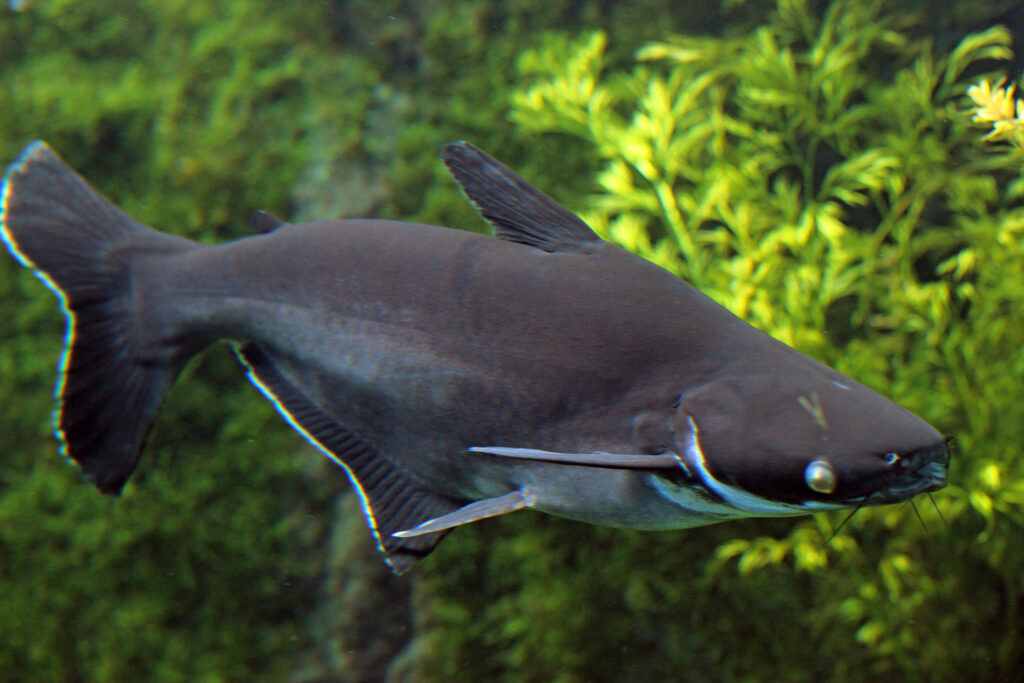
Iridescent Shark health management strategies reduce their vulnerabilities to stress and environmental injuries. I recommend dim lighting, soft tank decor, and very stable water quality.
Common Issues
Shock, injuries, white spot disease, injuries from crashing into glass, and susceptibility to ich are some common issues this species will face under improper care.
Preventative Care
The instructions on creating an ideal environment for Iridescent Shark Catfish above include freshwater catfish disease prevention tips like:
- Lining the edges with vegetation
- Using smooth tank furnishing to prevent injuries from crashing into glass
- Consistent filtration, temperature, and water conditions to battle susceptibility to ich.
Providing a calm environment with these tips reduces the risk of stress in large aquarium fish.
Lifespan and Care Commitment
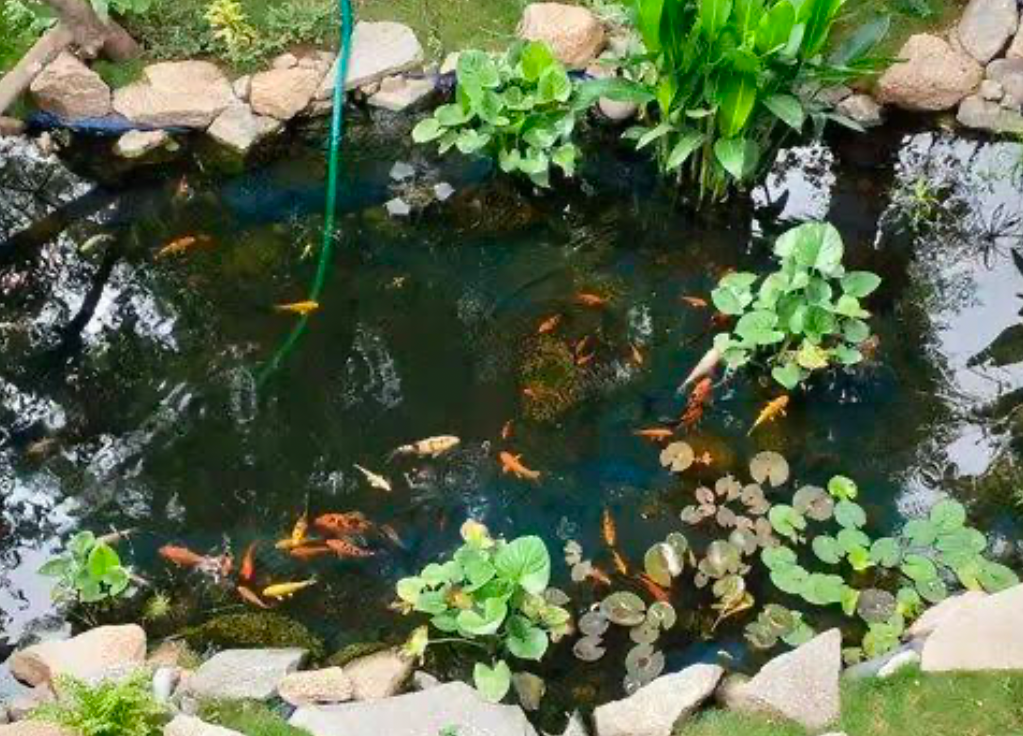
Do you know how long a Pangasianodon hypophthalmus’ lifespan lasts? If properly cared for using the methods in this guide, iridescent Sharks can live up to 20 years!
As seen above, beginner aquarists should prepare to manage their long-term size, space needs, and daily care responsibilities.
Size & Growth
Get an enclosure that’s about 3 – 5 ft long, depending on your Iridescent Shark Catfish’s size.
I recommend an aquarium-to-pond transition for adults who grow up to 4.3 ft long. It makes management easier.
Long-Term Planning
More long-term care for giant freshwater fish, such as the Iridescent Shark, includes providing indoor ponds or heated outdoor setups, depending on your available space. Also, ensure the ecosystem has essential high-powered equipment to keep it functioning at optimal capacity.
Conclusion: A Beautiful Giant Best Left to the Experts
This freshwater shark species review may intimidate you based on the weight of its care requirements, but don’t panic.
If you have the resources to provide the best practices for large aquarium fish, go ahead and add the Iridescent Shark catfish to your community. It’s a striking and peaceful pet worthy of being a centerpiece.
It requires only vast space, expert-level care, and a long-term commitment to the rules in this Iridescent Shark care guide. So, would you take on the challenge? Tell us in the comment box below.

